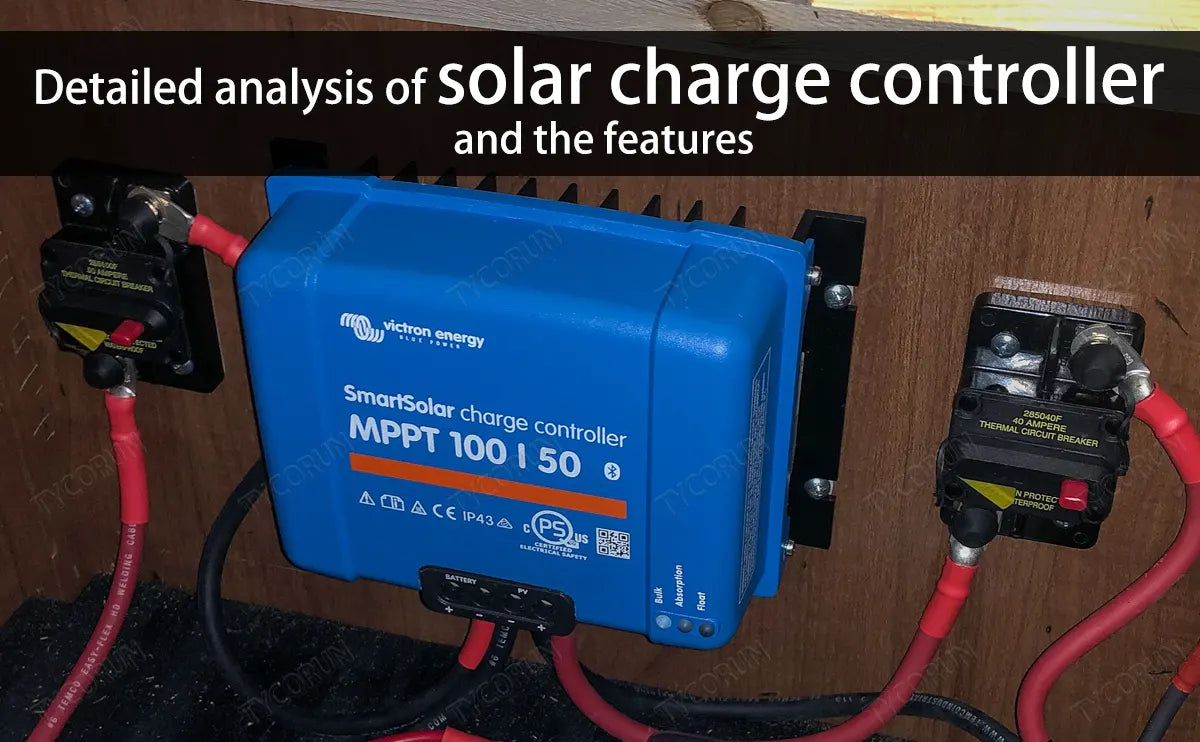
The solar charge controller is automatic control equipment used in solar power generation systems to control multi-channel solar cell arrays to charge the battery and the battery to supply power to the solar inverter load.
Main content:
- What is a solar charge controller
- How a solar charge controller works
- The role of the solar charge controller
- Principle of the solar control system
- The main classification of solar charge controllers
- The mode of operation of the solar charge controller
- Functions of the solar charge controller
- Solar charge controller installation and precautions
- Conclusion
1. What is a solar charge controller
The solar control system consists of solar panels, batteries, controllers, and loads. A solar charge controller is a device for controlling photovoltaic panels to charge batteries and provide load control voltage for voltage sensitive devices.
It stipulates and controls the charging and discharging conditions of the battery and the power output of the solar cell module and the battery to the load according to the power demand of the load, which is the core control part of the entire photovoltaic power supply system.
It is designed for power supply systems for communication or monitoring equipment in remote areas. The controller's load control and load control voltages are fully adjustable, and can display battery voltage, load voltage, solar array voltage, load current and load current.
2. How a solar charge controller works
Almost all solar power systems that are battery powered require a solar charge/discharge controller. The role of the solar charge controller is to regulate the power delivered from the solar panel to the battery.
Battery overshoot, at least significantly reduces battery life, from damage to the battery at worst until it is no longer functional. The solar charge controller adopts a high-speed CPU microprocessor and a high-precision A/D analog-to-digital converter, which is a microcomputer data acquisition and monitoring control system.
It can quickly collect the current working status of the photovoltaic system in real time and obtain the working information of the PV station at any time.
In addition, the historical data of the PV station can be accumulated in detail, which provides an accurate and sufficient basis for evaluating the rationality of the distributed pv system design and verifying the reliability of the quality of the system components.
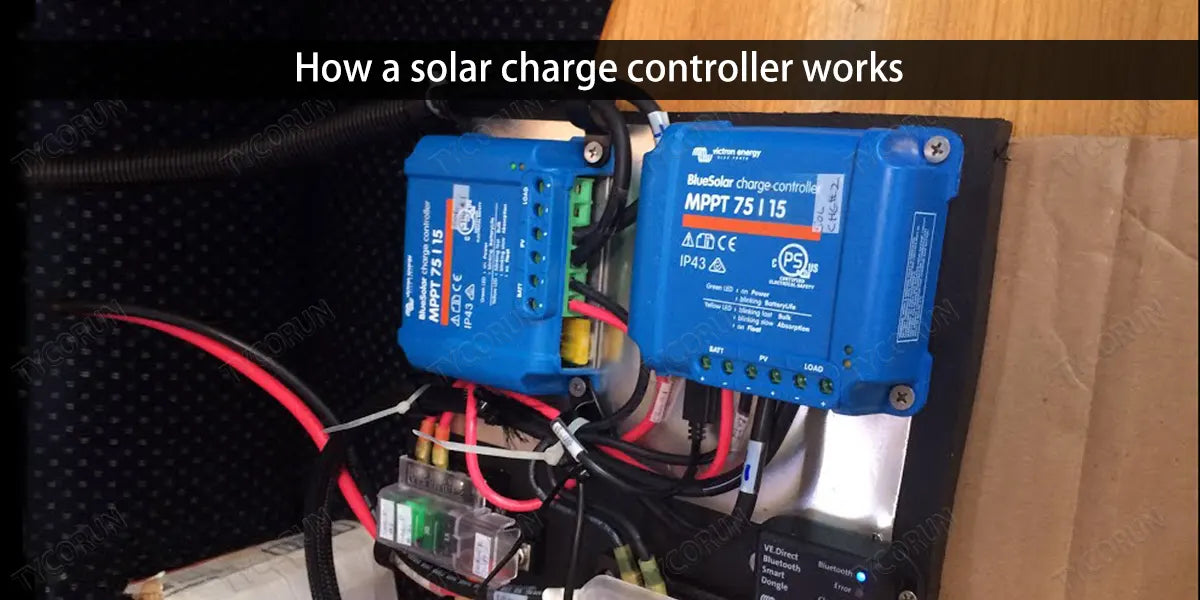
Moreover, the solar charge controller also has a serial communication data transmission function, which can centrally manage and control multiple PV system substations from a distance.
Solar charge controllers usually have 6 nominal voltage levels: 12V, 24V, 48V, 110V, 220V and 600V. At present, the controller is developing to be multi-functional, and there is a tendency to integrate the traditional control part, inverter (best 3000 watt inverter) and monitoring system.
3. The role of the solar charge controller
The most basic function of the solar charge and discharge controller is to control the battery voltage and turn on the circuit. In addition, when the battery voltage rises to a certain level, it will be stopped. Older controllers mechanically turn the control circuit on or off, stopping or starting the power delivered to the battery.
Controllers are used in most photovoltaic systems to protect batteries from overcharging or overdischarging. Overcharging can vaporize the electrolyte in the battery, causing failure, while overcharging can cause the battery to fail prematurely.
Overloading and discharging can damage the load. Therefore, the controller is one of the core components of the photovoltaic power generation system, and it is also the main part of the balance system BOS (Balance of System).
To put it simply, the role of a solar charge controller can be divided into:
- Power adjustment function.
- Communication features.
- Simple instructions and protocol communication functions such as wireless back-end management.
- Perfect protection function. Electrical protection: reverse connection, short circuit, overcurrent, etc.
4. Principle of the solar control system
Solar panels are photovoltaic devices (mainly semiconductor materials) that generate electric current after being irradiated with light. Due to the properties and limitations of materials and light, the resulting currents are also fluctuating curves.
If the generated current is charged directly into the battery or supplied directly to the load, it is easy to cause damage to the battery and the load, and seriously reduce their life.

Therefore, we must first feed the current into the solar charge controller, use a series of special chip circuits to digitally adjust it, and add multi-level charge and discharge protection to ensure the safe operation and service life of the battery and load.
When supplying power to the load, the current from the battery is also allowed to flow into the solar charge controller first, and then the current is sent to the load after its adjustment. The purpose of this is:
- Stabilize the discharge current.
- Ensure that the battery is not overcharged.
- A series of load and battery monitoring and protection.
- To use AC-powered devices, it is also necessary to add an inverter like 2000 watt inverter to the AC before loading.
5. The main classification of solar charge controllers
The popular solar charge controllers on the market mainly include ordinary solar charge controllers, PWM solar charge controllers and MPPT solar charge controllers.
● Ordinary solar charge controller
Ordinary solar charge controller is the first generation of technology. The working principle is to directly connect the output of the solar panel to the battery port. When the battery is sufficient, it will be disconnected.
Due to the internal resistance of the battery, it is difficult to fully charge the battery. Moreover, the solar panel is not fully utilized, and the charging conversion efficiency is only 70~76%. It has been removed from the market and is rarely used.
● PWM solar charge controller
PWM solar charge controller is the second generation of technology, now the most popular on the market. The working mode is PWM control mode, compared to ordinary solar charge controllers, which has improved a lot.
It can solve the problem of battery dissatisfaction, and the charging conversion efficiency is 75~80%, but the solar panel is not fully utilized. MPPT solar charge controller is the third generation technology, the most advanced solar charge controller.
● MPPT solar charge controller
MPPT solar charge controller can detect the voltage and current of the high efficiency solar panels in real time, and continuously track the maximum power, so that the system always charges the battery at the maximum power.
The MPPT tracking efficiency is 99%, and the power generation efficiency of the whole system is 97%. And it has excellent battery management, which is divided into MPPT charging, constant voltage average charging and constant voltage floating charging.
6. The mode of operation of the solar charge controller
● Pure light control mode
When there is no sunlight, the light intensity drops to the starting point. After the controller confirms the start signal with a delay of 10 minutes, the load is turned on according to the set parameters, and the load starts to work.
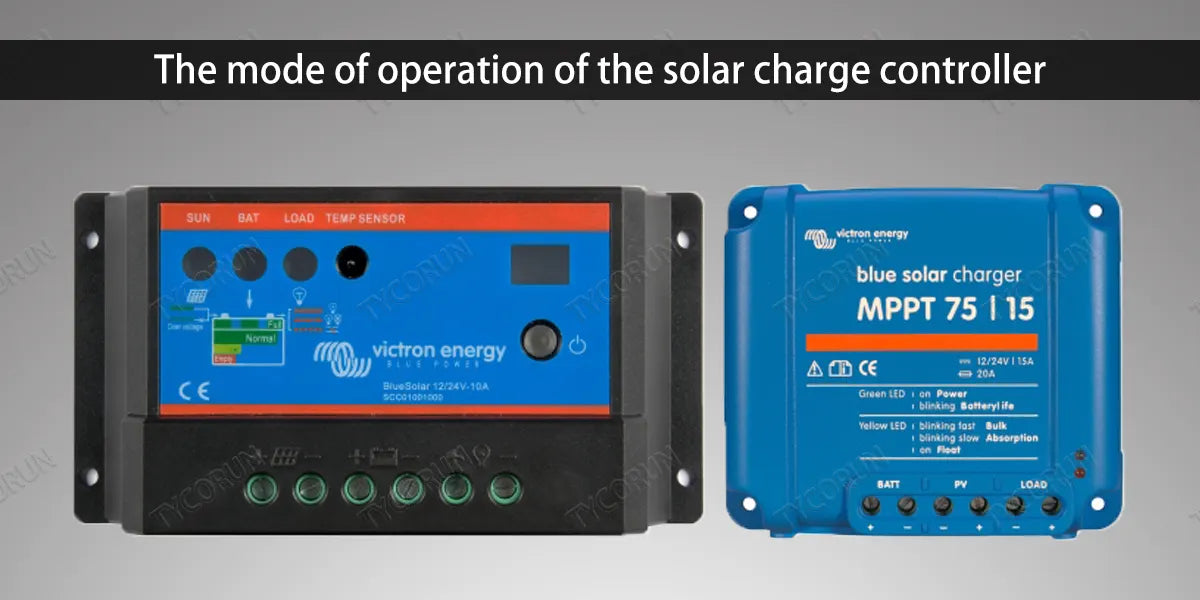
When there is sunlight, the light intensity rises to the starting point, and the controller delays 10 minutes to confirm the shutdown signal and then turns off the output, and the load stops working.
● Light control plus time control mode
The start-up process is the same as that of pure light control, and it will automatically shut down when the load works to a set time, and the setting time is from 1 to 14 hours.
● Manual mode
In this mode, the user can control the load on and off at the touch of a button, regardless of whether it is day or night. This mode is used for some special loading occasions or for debugging.
● Debug mode
It is used for system debugging. When there is an optical signal, the load is turned off, and the load is turned on without an optical signal, which is convenient for checking the correctness of the system installation during installation and commissioning.
● Always-on mode
The power-on load remains output all the time, and this mode is suitable for loads that require 24 hours of power supply.
7. Functions of the solar charge controller
The new solar charge controller has the following main functions:
● Overcharge protection
When the charging voltage is higher than the protection voltage, the battery will be automatically turned off for charging. After that, when the voltage drops to the maintenance voltage, the battery enters the floating state.
When the recovery voltage is lower than the recovery voltage, the floating charge is turned off and the uniform charge state is entered.
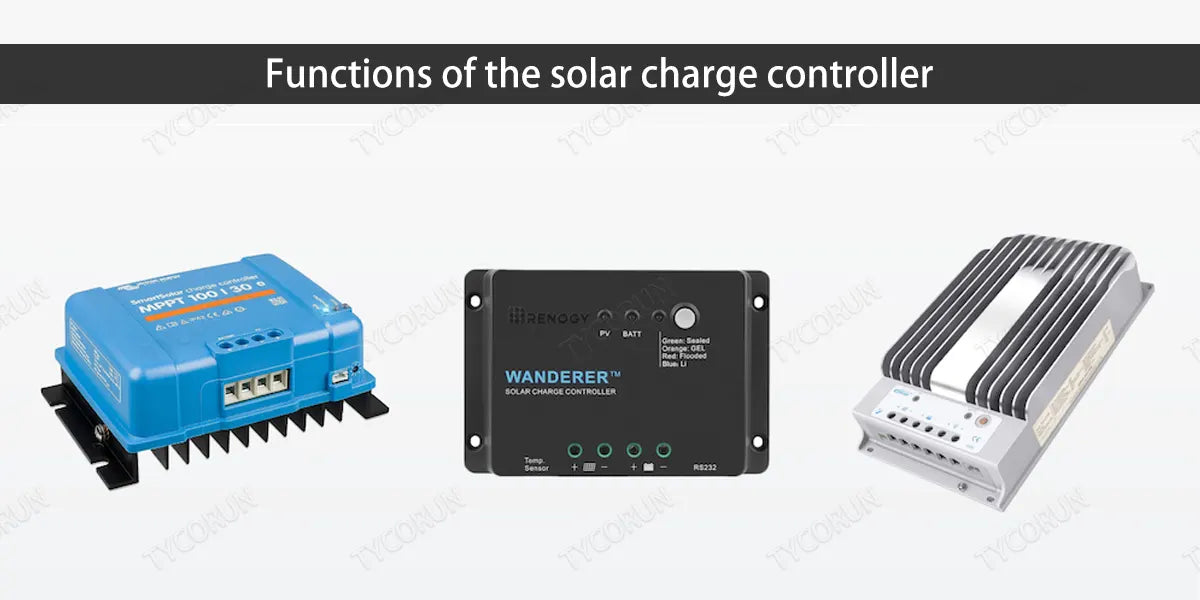
● Over-discharge protection
When the battery voltage is lower than the protection voltage, the controller automatically shuts down the output to protect the battery from damage. When the battery is recharged, the power supply can be automatically restored.
● Load over-current and short-circuit protection: After the load current exceeds 10A or the load is short-circuited, the fuse wire is blown and can continue to be used after replacement.
● Overvoltage protection: When the voltage is too high, the output will be automatically turned off to protect the electrical appliance from damage.
● Anti-reverse charging function: Schottky diodes are used to prevent the battery from charging the solar cell.
● Lightning protection function: When lightning strikes, the varistor can prevent lightning strikes and protect the controller from damage.
● Solar cell reverse polarity protection: The solar cell "+" "-" polarity is reversed, and it can continue to be used after correction.
● Battery reverse connection protection: The battery "+" "-" polarity is reversed, the fuse wire is fused, and it can continue to be used after replacement
● Battery open circuit protection
In case the battery is open, if the solar cell is charged normally, the controller will limit the voltage at both ends of the load to ensure that the load is not damaged. If at night or when the solar battery is not charged, the controller will have no action because it cannot get power.
● Self-test
When the controller is affected by natural factors or improper human operation, the controller can be allowed to self-test. Letting people know if the controller is in good condition reduces a lot of unnecessary man-hours and creates conditions for achieving the quality and schedule of the project.
● Recovery interval
It is the recovery interval made for overcharge or overdischarge protection to avoid the working bucket of the load caused by the line resistance or self-recovery characteristics of the battery.
● Temperature compensation
Monitor the temperature of the battery, and make corrections to charging and discharging values to make the battery work in an ideal state.
● Light control
Mostly used for automatic lamps. When the environment is bright enough, the controller will automatically turn off the load output. When the environment is dark, the load will be automatically turned on to achieve the function of automatic control.
8. Solar charge controller installation and precautions
① The specific steps of installation
- Open the package and secure it in place (avoid direct sunlight and humidity).
- Connect the battery leads (so that the automatic identification function does not cause errors)
- Wait for the controller to complete the identification process (after the level indicator indicates the battery level)
- Connect the solar panel leads.
- Connect the load line with the load turned off. For safe use, do not overload the solar panels.
- Charge the battery with a power source, such as a power supply machine, instead of a solar cell.
- When charging, remove the solar panel, and the charging current should not be too large.
- Pay attention to the cathode and anode of the battery.
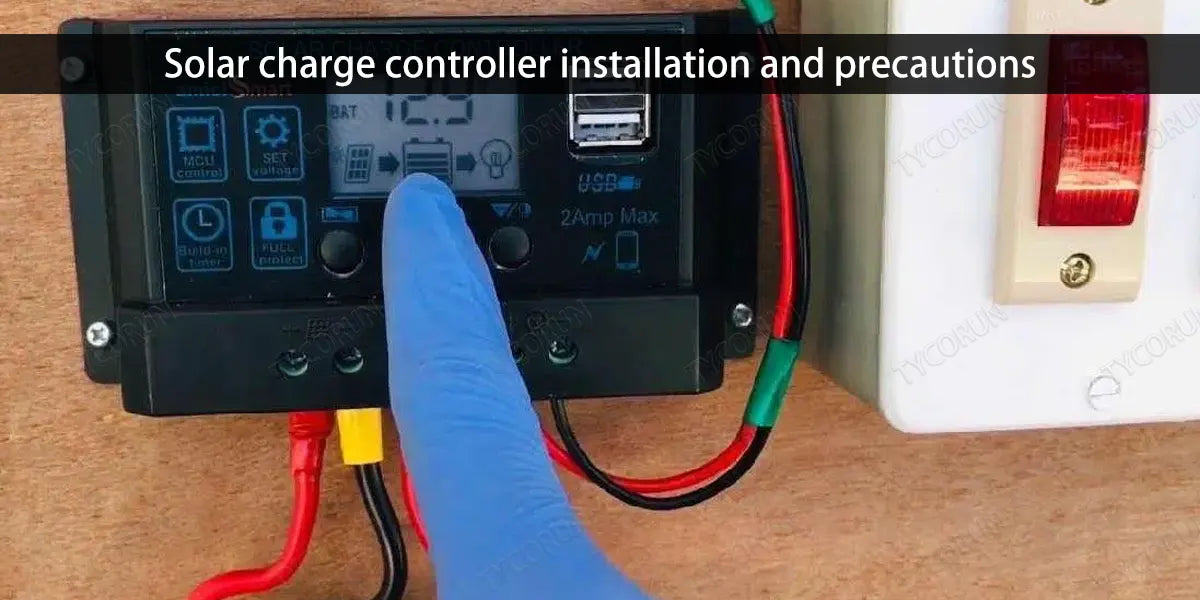
② Common faults and troubleshooting
● The load does not work
- During the day, the controller has light control.
- There is not enough power in the battery.
- Whether the wiring is correct.
- Remove all wires and repeat the installation process above to allow the controller to re-identify.
● It can be used for the first few days and will not work after a few days.
- The solar cell is wired incorrectly.
- The solar cells are not connected properly.
● Can't be light-controlled
- The solar cell is wired incorrectly.
- This feature is not set, please set it again.
● Work when the machine is on, and it cannot be controlled by light or time.
- This feature is not set, please set it again.
- The ambient light of the solar panels is strong enough.
● The work instructions are flashing
- The load has a short circuit or is too large.
9. Conclusion
The solar charge controller also has a serial communication data transmission function, which can centrally manage and control multiple PV system substations from a distance.
At present, there are two main technical routes of the controller: pulse width debugging (PWM) mode and maximum power point tracking (MPPT) mode, each of which has its advantages and disadvantages, which can be selected according to different scenarios.
Related articles: Inverter shops near me, Top 5 inverter battery companies, top 10 PV inverter companies